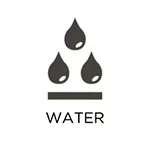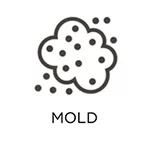When a flood occurs, water will spread according to the path providing the least resistance, especially those with extra depth. The porous materials, including wood, drywall, and insulation will soak up the most water, even traveling upward to spread the damage. Finally, this will result in discoloration, swelling, broken adhesive bonds, delamination (when the floor separates), warping and further breaking down of the building materials. The more time that is allowed before treatment, the more damage that is incurred. Even if the water does evaporate on its own, it will damage the walls, ceilings, and other overhead materials.
RestorationMaster is a reliable and professional water damage restoration company. We are licensed, insured and endorsed by IIRC to provide effective water damage cleanup services. In addition to their years of experience, our technicians partake in ongoing training in order to remain updated on the newest methods, procedures, and equipment available for water extraction. This equipment includes high-velocity air movers, dehumidifiers, mold remediation equipment, and corrosion control.
While this information will be general in order to explain the basis of our process, your technician will be able to answer all questions related to your particular case. You can also refer to our Frequently Asked Questions page about our services to answer any additional questions you may have about the outcome of your property.
While it is the goal of RestorationMaster to restore your property as quickly and efficiently as possible, the drying process may require up to three steps before it is completed.
Phase 1: Emergency Services
As soon as the technician(s) arrive, they will provide you with a Statement of Authorization, in which will require your signature before we can begin any restoration work. They will then begin with the inspection of the entire property, determining which materials are able to be salvaged and those that will require replacing. If there is standing water in the room, we will work to have it extracted as quickly and efficiently as possible. We will then set up our equipment, using high-velocity air movers and dehumidifier to remove as much moisture as possible within the floors and subfloors. If needed, your carpet may also need antimicrobials in order to inhibit the growth of bacteria. In some cases, the carpet must be removed from the tack strip in order to allow for the most efficient drying process. If the specialist determines that padding is not able to be restored, a sample of the pad will be taken back to the facility. Once the type of padding has been identified, a replacement will then be ordered for reinstallation. However, keep in mind that the carpet may also need to be replaced.
Frequent Monitoring and Inspections
Throughout the drying process, the technician will be required to have access to your property in order to properly monitor the temperature, humidity and our equipment. You can work with our office to establish the time windows that best work for you.
Phase 2: Cleaning and Reinstallation
In the cases that the carpet is able to be restored, a replacement pad is still necessary in order to reinstall the carpet. The reinstallation process will include the restretching, reattaching the tack strip, seam and threshold repair or replacement. After the carpet is reinstalled, it is then ready to be cleaned and deodorized. In the cases that both the carpet and pad are able to be restored in their place, they will still need to be cleaned in order to inhibit microbial growth. Any other upholstery or damaged items will also be cleaned during this process, if needed. The equipment will then be removed after this phase is completed.
Repairing the Building Materials
After the drying process is finished, the damage to the building materials will be examined as the repair process will be ready to begin. In this phase, the drywall, floors, and ceilings will all be restored. If the carpet cannot be restored, the replacement will be installed at this time. It may also be necessary to replace the structural materials before the carpet is reinstalled.
You can also refer to our water damage prevention tips to learn how you can prevent future damage to your property.




